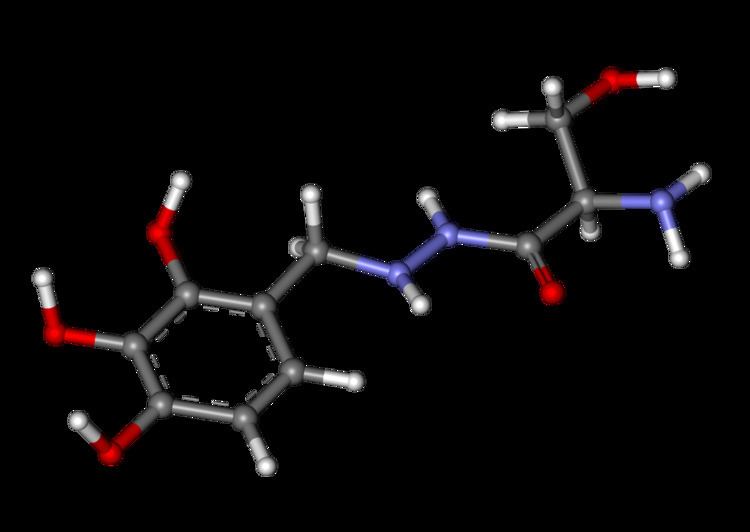Pregnancycategory AU: B3 CAS Number 14919-77-8 Molar mass 257.243 g/mol | Excretion Renal and fecal PubChem CID 2327 CAS ID 14919-77-8 | |
 | ||
AHFS/Drugs.com International Drug Names Legal status UK: POM (Prescription only)(with levodopa) | ||
How to pronounce benserazide
Benserazide (also called Serazide or Ro 4-4602) is a peripherally-acting aromatic L-amino acid decarboxylase (AADC) or DOPA decarboxylase inhibitor, which is unable to cross the blood–brain barrier.
Contents
Indications
It is used in the management of Parkinson's disease in combination with L-DOPA (levodopa) as co-beneldopa (BAN), under the brand names Madopar in the UK and Prolopa in Canada, both made by Roche. Benserazide is not approved for use in the US; carbidopa is used instead for the same purpose. These combinations are also used for the treatment of restless legs syndrome.
Pharmacology
Levodopa is a precursor to the neurotransmitter dopamine which is administered to increase its levels in the central nervous system. However, most levodopa is decarboxylated to dopamine before it reaches the brain, and since dopamine is unable to cross the blood–brain barrier, this translates to little therapeutic gain with strong peripheral side effects.
Benserazide inhibits the aforementioned decarboxylation, and since it itself cannot cross the blood–brain barrier, this allows dopamine to build up solely in the brain instead. Adverse effects caused by peripheral dopamine, such as vasoconstriction, nausea, and arrhythmia, are minimized. However, benserazide cannot reduce the centrally-mediated side effects of levodopa, particularly dyskinesia.
Benserazide has little therapeutic effect on its own, and its effect occurs synergically in combination with levodopa.
The enzyme inhibited by Benzerazide, catalyzes many different decarboxylations. The same effect of concentrating the conversion of l-dopa into dopamine to the central nervous system can be achieved with the following decarboxylations being confined to the central nervous system:
Centrally-mediated side effects of higher levels of neuro and trace amine transmitters may worsen in combination with monoamine oxidase inhibitors.
